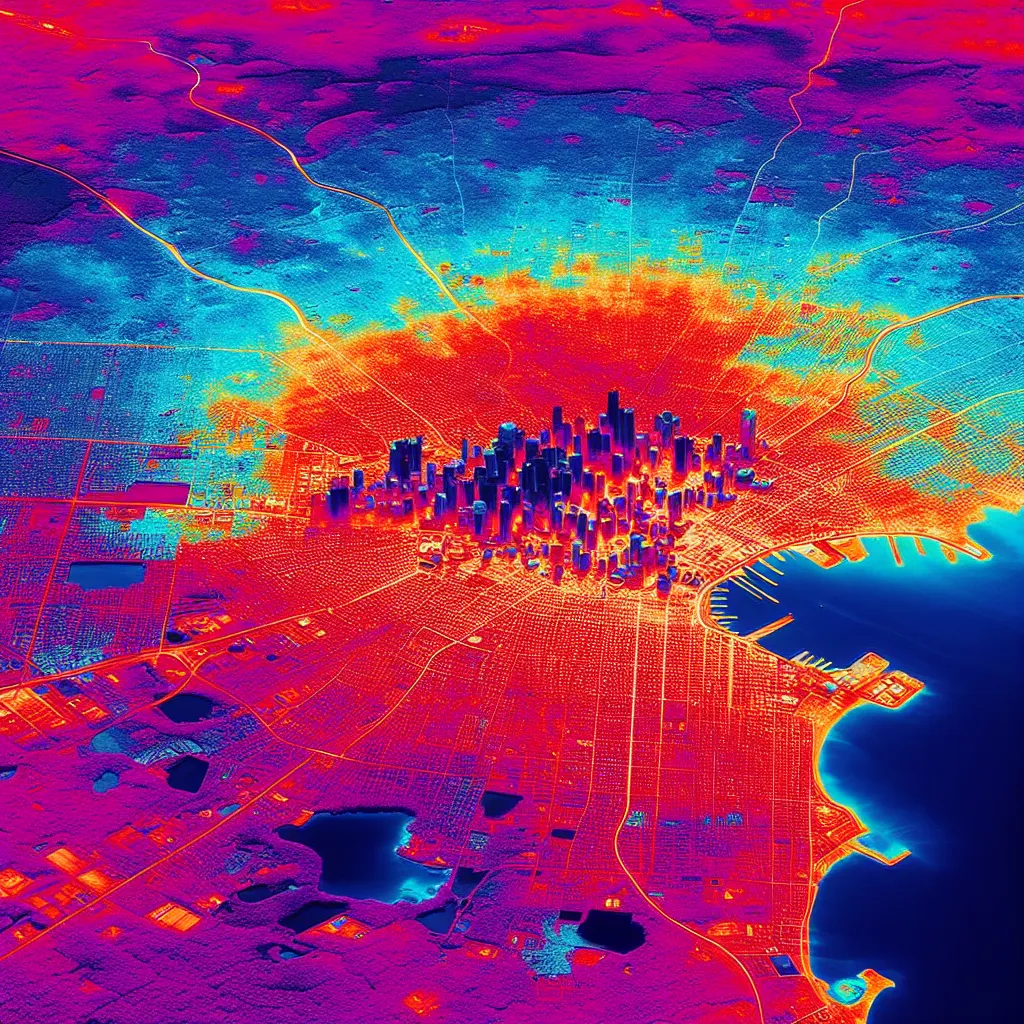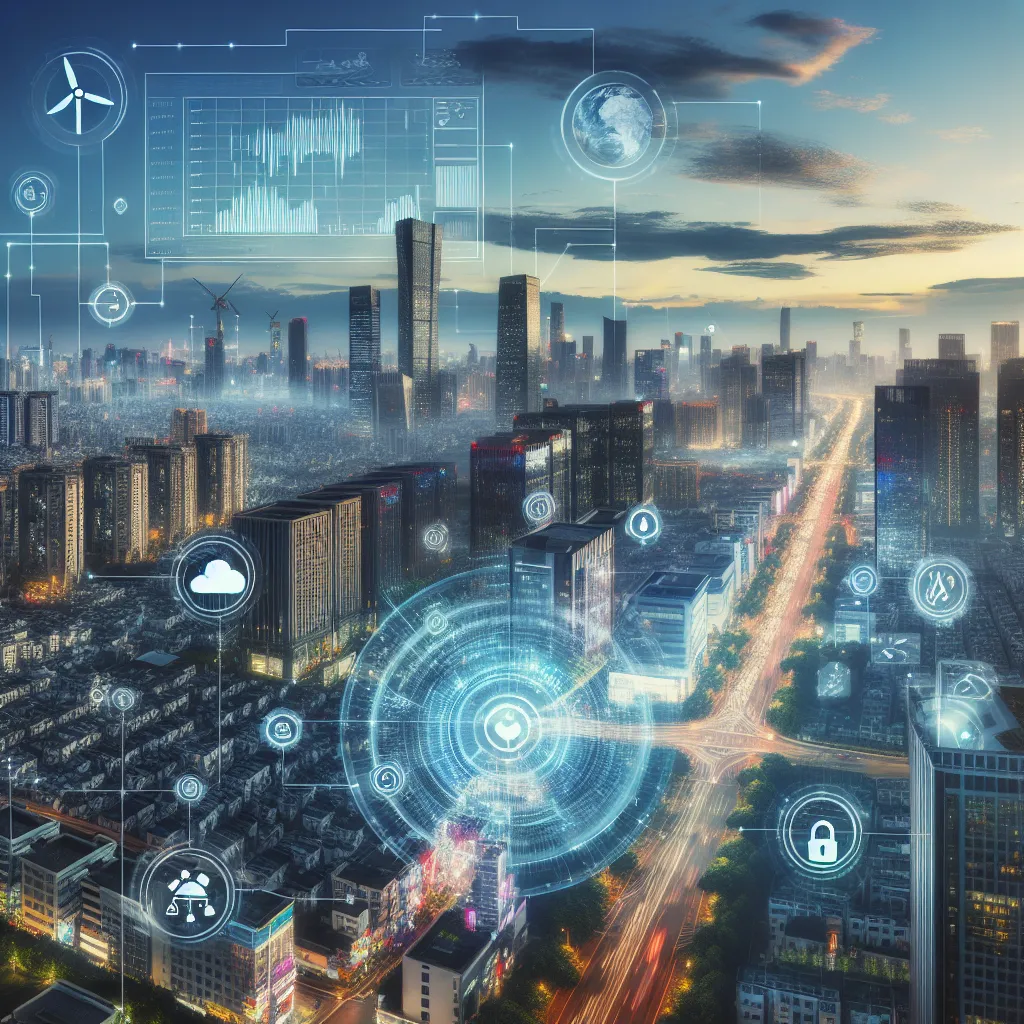The IELTS Reading section is a crucial component of the test, assessing your ability to comprehend complex texts and extract key information. Today, we’ll focus on a topic that has become increasingly prevalent in recent years: the effects of climate change on urban areas. This subject has appeared frequently in past IELTS exams and, given its ongoing relevance, is likely to feature in future tests as well.
Nội dung bài viết
Climate change and its impact on cities is a pressing global concern, making it a prime candidate for IELTS Reading passages. As urban areas continue to grow and face environmental challenges, understanding this topic is not only beneficial for your IELTS preparation but also for your general knowledge.
Let’s dive into a practice reading passage on this subject, followed by a set of questions that mirror the format and difficulty level of the actual IELTS exam.
Reading Passage
Urban Climate Change: Challenges and Adaptations
Climate change is no longer a distant threat but a present reality, with its effects being felt across the globe. Urban areas, home to more than half of the world’s population, are particularly vulnerable to these changes. The concentration of people, infrastructure, and economic activities in cities makes them hotspots for climate-related risks.
One of the most significant impacts of climate change on urban areas is the increased frequency and intensity of extreme weather events. Cities are experiencing more heatwaves, which are exacerbated by the urban heat island effect. This phenomenon occurs when cities replace natural land cover with dense concentrations of pavement, buildings, and other surfaces that absorb and retain heat. Consequently, urban areas can be significantly warmer than their rural surroundings, leading to increased energy consumption for cooling, air pollution, and heat-related illnesses.
 Urban Heat Island Effect
Urban Heat Island Effect
Flooding is another major concern for urban areas. As sea levels rise and precipitation patterns change, many coastal cities face an increased risk of inundation. Urban flooding is not limited to coastal areas, however. Intense rainfall events can overwhelm drainage systems in any city, leading to flash floods. The proliferation of impermeable surfaces in urban environments, such as roads and parking lots, reduces the land’s natural ability to absorb water, further exacerbating the problem.
Air quality in cities is also affected by climate change. Higher temperatures can lead to increased formation of ground-level ozone, a major component of smog. This, combined with changes in wind patterns and increased frequency of wildfires in some regions, can significantly degrade urban air quality, posing serious health risks to city dwellers.
The effects of climate change on urban infrastructure are far-reaching. Transportation systems, including roads, railways, and airports, are vulnerable to extreme weather events and rising sea levels. Energy systems may struggle to meet increased demand during heatwaves while simultaneously being at risk from storms and flooding. Water supply systems in many cities are also under threat, with changing precipitation patterns and increased evaporation rates affecting water availability and quality.
In response to these challenges, many cities are developing climate adaptation strategies. Green infrastructure, such as urban forests and green roofs, is being implemented to reduce the urban heat island effect and manage stormwater. Coastal cities are investing in sea walls and natural barriers to protect against rising sea levels. Some cities are redesigning their drainage systems to better handle intense rainfall events.
Urban planning is evolving to incorporate climate resilience. This includes updating building codes to improve energy efficiency and withstand extreme weather, creating more pedestrian-friendly and bicycle-friendly spaces to reduce emissions, and developing early warning systems for extreme weather events.
While the challenges posed by climate change to urban areas are significant, they also present opportunities for innovation and improvement. As cities adapt to climate change, they have the potential to become more sustainable, livable, and resilient. The actions taken by urban areas in response to climate change will play a crucial role in shaping the future of our planet.
Questions
True/False/Not Given
Do the following statements agree with the information given in the reading passage? Write
TRUE if the statement agrees with the information
FALSE if the statement contradicts the information
NOT GIVEN if there is no information on this
- Urban areas are more susceptible to climate change impacts than rural areas.
- The urban heat island effect is caused by the replacement of natural surfaces with man-made structures.
- All types of urban flooding are directly linked to sea level rise.
- Climate change has no impact on the formation of ground-level ozone in cities.
- Many cities are implementing green infrastructure as a climate adaptation strategy.
Multiple Choice
Choose the correct letter, A, B, C, or D.
-
According to the passage, which of the following is NOT mentioned as an effect of urban heat islands?
A) Increased energy consumption
B) Higher levels of air pollution
C) More frequent heat-related illnesses
D) Decreased water consumption -
The passage suggests that urban flooding is exacerbated by:
A) The urban heat island effect
B) The proliferation of permeable surfaces
C) The abundance of impermeable surfaces
D) Increased vegetation in cities
Matching Headings
Match the following headings to the correct paragraphs in the passage. Write the correct number i-viii next to questions 8-11.
i. Adapting urban infrastructure to climate change
ii. The impact of climate change on urban air quality
iii. Flooding risks in urban environments
iv. Climate change effects on urban temperature
v. The role of urban planning in climate resilience
vi. Opportunities arising from climate adaptation in cities
vii. The vulnerability of urban water supply systems
viii. The challenge of extreme weather events in cities
- Paragraph 2 __
- Paragraph 3 __
- Paragraph 4 __
- Paragraph 7 __
Summary Completion
Complete the summary below using words from the box. Write your answers in boxes 12-15 on your answer sheet.
NB There are more words than spaces, so you will not use them all.
resilience adaptation mitigation vulnerable resistant sustainable fragile robust
Urban areas are particularly (12) __ to the effects of climate change due to their high concentration of people and infrastructure. Cities are developing climate (13) __ strategies to address these challenges. These strategies aim to make urban areas more (14) __ to extreme weather events and other climate-related risks. As cities adapt to climate change, they have the potential to become more (15) __ and livable.
Answer Key
- TRUE
- TRUE
- FALSE
- FALSE
- TRUE
- D
- C
- iv
- iii
- ii
- v
- vulnerable
- adaptation
- resilient
- sustainable
Explanations
-
True – The passage states that “Urban areas, home to more than half of the world’s population, are particularly vulnerable to these changes.”
-
True – The passage explains that the urban heat island effect occurs “when cities replace natural land cover with dense concentrations of pavement, buildings, and other surfaces that absorb and retain heat.”
-
False – The passage mentions that urban flooding can occur due to intense rainfall events overwhelming drainage systems, not just sea level rise.
-
False – The passage states that “Higher temperatures can lead to increased formation of ground-level ozone, a major component of smog.”
-
True – The passage mentions that “Green infrastructure, such as urban forests and green roofs, is being implemented to reduce the urban heat island effect and manage stormwater.”
-
D – Decreased water consumption is not mentioned as an effect of urban heat islands. The passage mentions increased energy consumption, air pollution, and heat-related illnesses.
-
C – The passage states that “The proliferation of impermeable surfaces in urban environments, such as roads and parking lots, reduces the land’s natural ability to absorb water, further exacerbating the problem.”
-
iv – This paragraph discusses how climate change affects urban temperatures through the urban heat island effect.
-
iii – This paragraph focuses on the increased flooding risks in urban areas due to climate change.
-
ii – This paragraph discusses how climate change affects air quality in urban areas.
-
v – This paragraph explains how urban planning is evolving to incorporate climate resilience.
-
vulnerable – The passage states that urban areas are “particularly vulnerable” to climate change effects.
-
adaptation – The passage mentions “climate adaptation strategies” that cities are developing.
-
resilient – The passage talks about incorporating “climate resilience” into urban planning.
-
sustainable – The passage concludes by saying cities have the potential to become “more sustainable, livable, and resilient” as they adapt to climate change.
Common Mistakes
-
Misinterpreting “Not Given” statements: Remember, “Not Given” means the information is neither confirmed nor denied in the passage.
-
Overlooking specific details: In questions like Multiple Choice, pay attention to all details provided in the options.
-
Being misled by similar words: In the Summary Completion, words like “resistant” and “robust” might seem appropriate, but the passage specifically uses “resilient.”
-
Failing to match headings accurately: Ensure you understand the main idea of each paragraph before matching it with a heading.
-
Answering based on general knowledge rather than the passage: Always base your answers on the information provided in the text, not your own knowledge of the topic.
Vocabulary
Here are some key vocabulary terms from the passage:
- Vulnerability (noun) – /vʌlnərəˈbɪləti/ – susceptibility to harm or damage
- Exacerbate (verb) – /ɪɡˈzæsəbeɪt/ – to make a problem or situation worse
- Inundation (noun) – /ˌɪnʌnˈdeɪʃn/ – flooding or overwhelming with water
- Proliferation (noun) – /prəˌlɪfəˈreɪʃn/ – rapid increase in numbers
- Impermeable (adjective) – /ɪmˈpɜːrmɪəbl/ – not allowing fluid to pass through
- Resilience (noun) – /rɪˈzɪliəns/ – the ability to recover quickly from difficulties
Grammar Focus
Pay attention to the use of conditional sentences in the passage. For example:
“As cities adapt to climate change, they have the potential to become more sustainable, livable, and resilient.”
This is an example of a first conditional sentence, used to talk about a possible future result of a present action or situation. The structure is:
If/When + present simple, … will + infinitive
Practice forming similar sentences related to climate change and urban areas.
Tips for IELTS Reading Success
-
Time management: Allocate your time wisely between reading the passage and answering questions.
-
Skim and scan: Quickly skim the passage for main ideas, then scan for specific details when answering questions.
-
Use context clues: If you encounter unfamiliar words, try to understand their meaning from the context.
-
Practice regularly: Familiarize yourself with different question types and passage structures through consistent practice.
-
Stay calm and focused: Don’t panic if you find a passage difficult. Move on to easier questions and return to challenging ones later if time allows.
Remember, success in IELTS Reading comes with practice and familiarity with the test format. Keep working on your reading skills, vocabulary, and time management to improve your performance.
For more practice on related topics, you might find these articles helpful:
- Effects of Climate Change on Rural Communities
- Urbanization and the Loss of Natural Habitats
- Urban Planning and Green Spaces
Good luck with your IELTS preparation!


